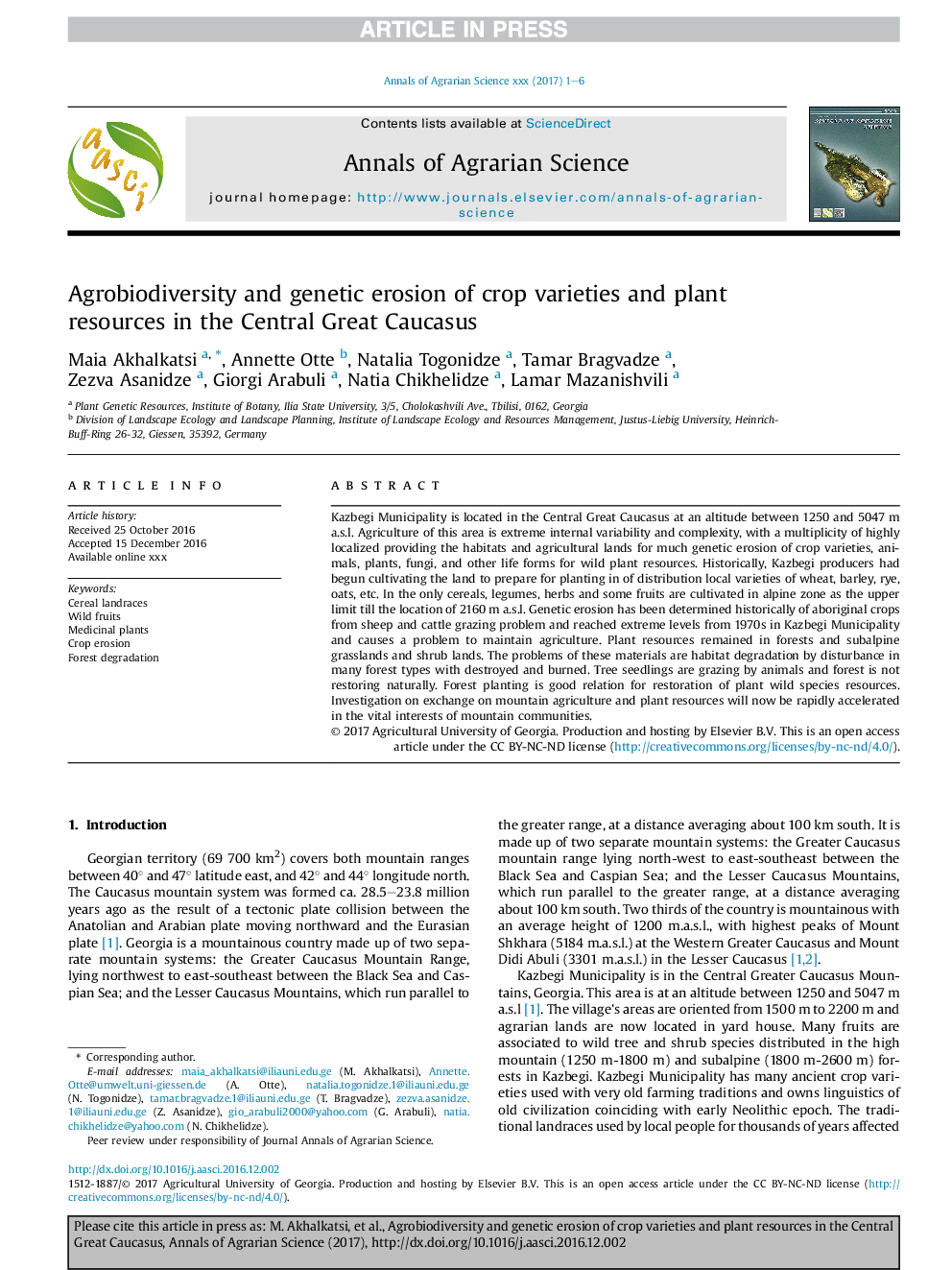| Article ID | Journal | Published Year | Pages | File Type |
|---|---|---|---|---|
| 7228712 | Annals of Agrarian Science | 2017 | 6 Pages |
Abstract
Kazbegi Municipality is located in the Central Great Caucasus at an altitude between 1250 and 5047Â m a.s.l. Agriculture of this area is extreme internal variability and complexity, with a multiplicity of highly localized providing the habitats and agricultural lands for much genetic erosion of crop varieties, animals, plants, fungi, and other life forms for wild plant resources. Historically, Kazbegi producers had begun cultivating the land to prepare for planting in of distribution local varieties of wheat, barley, rye, oats, etc. In the only cereals, legumes, herbs and some fruits are cultivated in alpine zone as the upper limit till the location of 2160Â m a.s.l. Genetic erosion has been determined historically of aboriginal crops from sheep and cattle grazing problem and reached extreme levels from 1970s in Kazbegi Municipality and causes a problem to maintain agriculture. Plant resources remained in forests and subalpine grasslands and shrub lands. The problems of these materials are habitat degradation by disturbance in many forest types with destroyed and burned. Tree seedlings are grazing by animals and forest is not restoring naturally. Forest planting is good relation for restoration of plant wild species resources. Investigation on exchange on mountain agriculture and plant resources will now be rapidly accelerated in the vital interests of mountain communities.
Related Topics
Physical Sciences and Engineering
Engineering
Biomedical Engineering
Authors
Maia Akhalkatsi, Annette Otte, Natalia Togonidze, Tamar Bragvadze, Zezva Asanidze, Giorgi Arabuli, Natia Chikhelidze, Lamar Mazanishvili,
